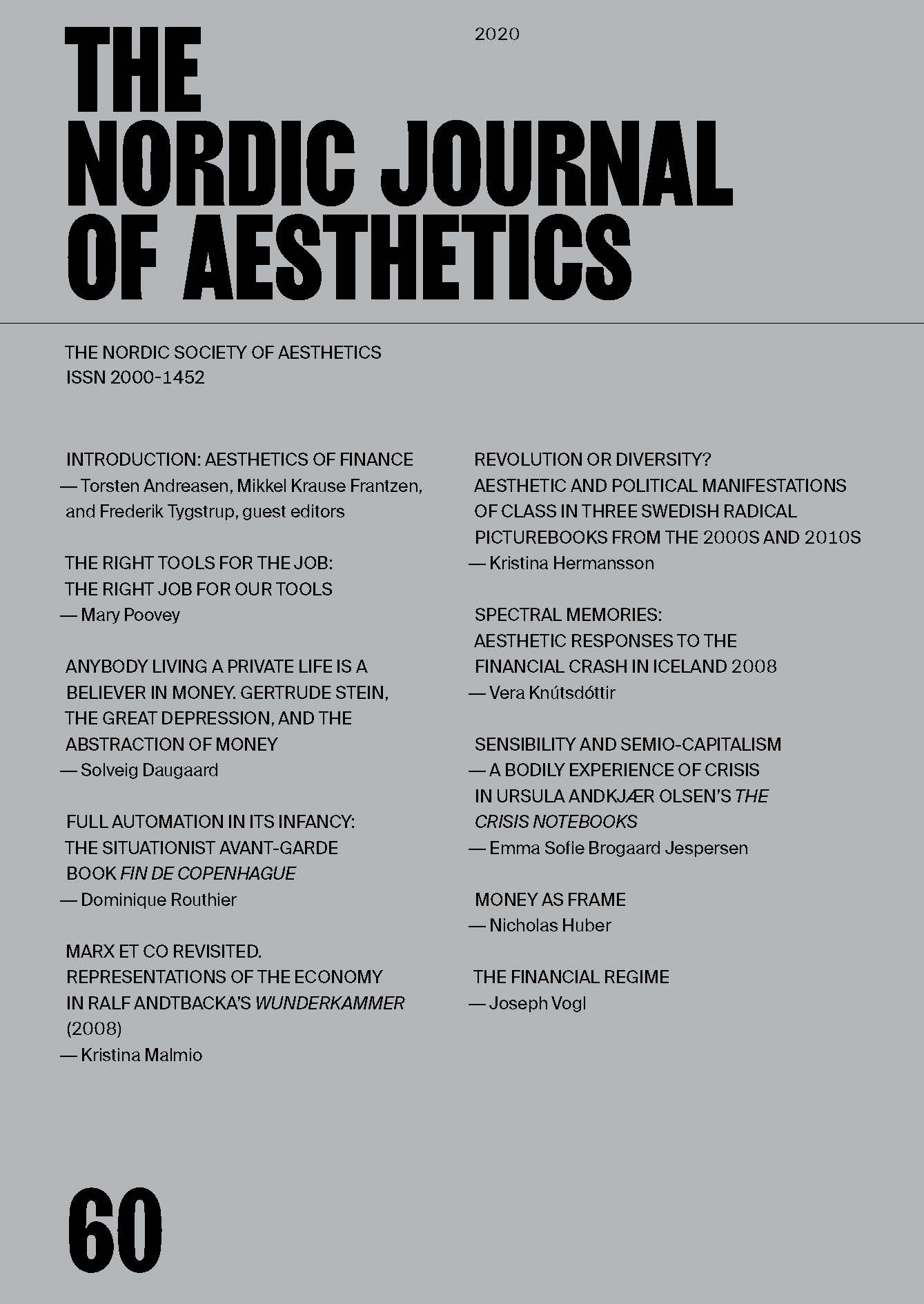REVOLUTION OR DIVERSITY? AESTHETIC AND POLITICAL MANIFESTATIONS OF CLASS IN THREE SWEDISH RADICAL PICTUREBOOKS FROM THE 2000S AND 2010S
DOI:
https://doi.org/10.7146/nja.v29i60.122843Keywords:
Children’s Literature, Picturebook, Iconotext, Class, Capital, Respectability, DiversityAbstract
This article explores manifestations of class from a combined aesthetical and political point of view, focusing on a selection of Swedish children’s picture books from 2009 to 2018, in which class differences are made prominent. In this sense, they can be regarded as radical. This study examines how political aspects are intertwined with literary, visual, and multimodal means. The main purpose is to examine how the political and aesthetical merge in the manifestations of class. The publishing of radical picture books during the 2000s and 2010s coincided with a rise of norm-criti-cal discourse, including a strong emphasis on diversity rather than on social transformation. The books, I argue, do not depict radical change on a collective level, but uses various aesthetic means in their manifestations of class and inequality. Theoretically, the anal-ysis mainly draws on Pierre Bourdieu’s theory of capital (1984), and Beverley Skeggs’s (1997) reasoning on class by adding the con-cept of respectability, as well as picturebook theory, and scholarly writing on radical picturebooks.
Downloads
Published
How to Cite
Issue
Section
License
Authors who publish with this journal agree to the following terms:
- Authors retain copyright and grant the journal right of first publication with the work simultaneously licensed under a Creative Commons Attribution License that allows others to share the work with an acknowledgement of the work's authorship and initial publication in this journal.
- Authors are able to enter into separate, additional contractual arrangements for the non-exclusive distribution of the journal's published version of the work (e.g., post it to an institutional repository or publish it in a book), with an acknowledgement of its initial publication in this journal.
- Authors are permitted and encouraged to post their work online (e.g., in institutional repositories or on their website) prior to and during the submission process, as it can lead to productive exchanges, as well as earlier and greater citation of published work (See The Effect of Open Access).




